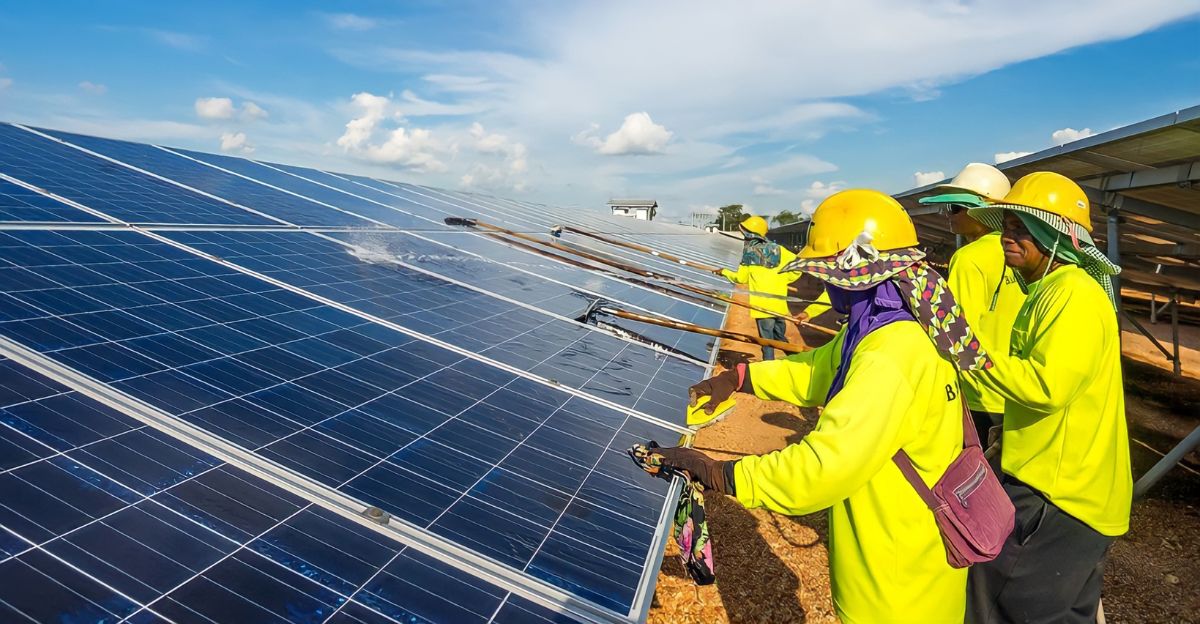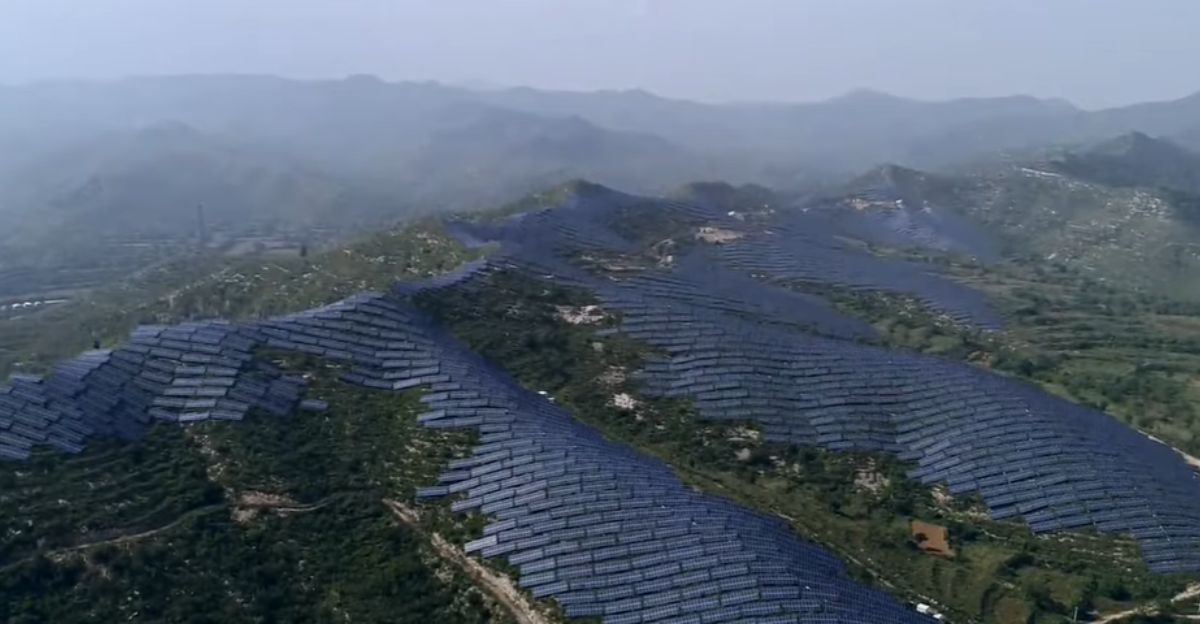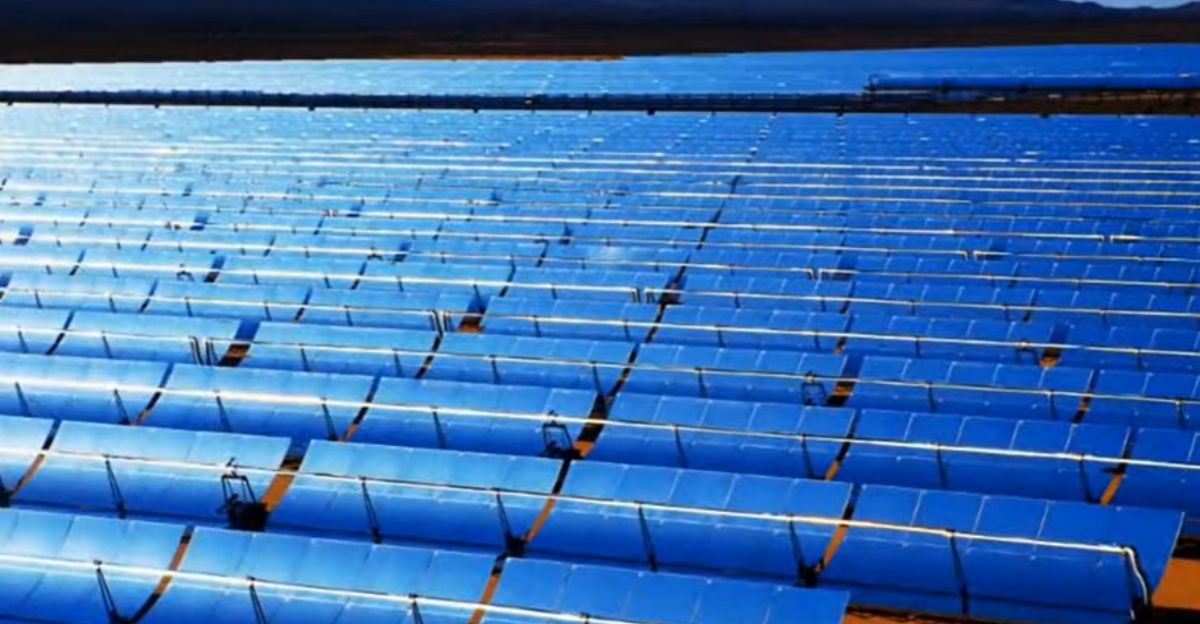
China has pioneered large-scale solar panel installations across mountainous terrains, transforming previously underutilized slopes into vast clean energy hubs. This mountain solar revolution extends beyond energy production, delivering environmental benefits such as soil stabilization, economic upliftment through new income streams, and social improvements like rural electrification.
As the world’s largest solar market, China’s aggressive deployment aligns with its ambitious climate goals to peak carbon emissions by 2030 and achieve carbon neutrality by 2060. This integration of technology, environment, and rural development exemplifies China’s renewable energy innovation and sustainability leadership.
The Scale and Scope of Mountain Solar Projects

China’s mountain solar projects cover many areas, notably in Guizhou and Zhejiang provinces. For example, Guizhou’s solar capacity surged from 1.75 million kilowatts in 2018 to 15 million kilowatts by 2023, powering thousands of households nearly 100,000 perovskite panels in Zhejiang blanket a mountainside, creating one of the largest solar plants globally.
Drone and satellite imagery reveal vast arrays of panels stretching across rugged terrain, showcasing China’s ability to exploit challenging landscapes for renewable energy generation.
Innovative Technology – Perovskite Solar Panels

Perovskite solar panels represent a technological breakthrough in China’s mountain solar farms. These panels offer higher efficiency (~20.2%) compared to traditional silicon, are lighter, flexible, and cheaper to produce with less environmental impact, and are adaptable to irregular, sloped terrains, enabling installation on steep mountainsides where conventional panels struggle.
Manufactured by companies like MicroQuanta Semiconductor, perovskite modules optimize sunlight capture with a 22° tilt, maximizing energy output while reducing land footprint.
Agrivoltaics – Combining Solar Energy and Agriculture

China’s mountain solar projects employ agrivoltaics by elevating panels about two meters above ground, allowing crops like lettuce to grow underneath. This dual land use creates a microclimate that shields plants from storms and excessive radiation, enhancing agricultural yields.
Zhejiang province’s synergy between solar power and farming exemplifies sustainable land management, increasing land productivity without compromising energy generation. Such integration supports food security alongside clean energy expansion.
Environmental Benefits Beyond Energy Production

Beyond clean electricity, mountain solar panels stabilize soil and reduce erosion, combating desertification and reclaiming degraded lands. This ecological restoration supports biodiversity and prevents landslides on fragile slopes.
By replacing fossil fuel reliance with renewable power, these projects contribute significantly to China’s carbon neutrality ambitions, mitigating climate change impacts while improving mountain ecosystems’ resilience.
Economic and Social Impacts on Mountain Communities

Mountain solar farms generate new income for rural households through electricity sales, boosting local economies. In Shandong’s Yimeng Mountains, solar-powered street lamps enhance safety and quality of life.
Distributed rooftop panels enable villagers to earn monthly revenues, fostering energy independence and green jobs. These developments empower communities, reduce poverty, and support rural revitalization, illustrating renewable energy’s social benefits alongside environmental gains.
Challenges and Criticisms

Large-scale solar installations in mountainous ecosystems pose ecological risks, including habitat disruption and biodiversity loss. Steep terrain complicates panel maintenance and raises concerns over visual impacts and land use conflicts.
Balancing renewable energy expansion with conservation requires careful planning and environmental assessments to minimize adverse effects and ensure sustainable development.
Historical Context and China’s Renewable Energy Ambitions

China’s solar journey began with satellite panel production and evolved into vast desert and mountain farms. Government policies, subsidies, low-interest loans, and strategic targets have driven rapid growth.
China now commands a near-monopoly in global solar panel manufacturing and innovation, aiming to peak carbon emissions by 2030 and reach neutrality by 2060. Mountain solar projects represent the latest phase in this ambitious, state-driven renewable energy push.
Global Implications and Replicability

China’s mountain solar model, combining perovskite technology and agrivoltaics, offers a blueprint for other mountainous countries seeking to optimize land use.
Its success could influence global renewable strategies by demonstrating how to integrate energy production with agriculture and environmental restoration. However, critics question whether such large-scale projects are universally sustainable or economically viable outside China’s unique policy and economic context.
More Than Just Energy

China’s mountain solar revolution exemplifies a multifaceted solution addressing energy needs, environmental restoration, agricultural productivity, and rural development. It symbolizes innovation that harmonizes technology with sustainability.
As these projects expand, they will play a crucial role in China’s and the world’s clean energy transition, potentially inspiring global adoption of integrated renewable energy systems that maximize land use and social benefits.
Explore more of our trending stories and hit Follow to keep them coming to your feed!

Don’t miss out on more stories like this! Hit the Follow button at the top of this article to stay updated with the latest news. Share your thoughts in the comments—we’d love to hear from you!







